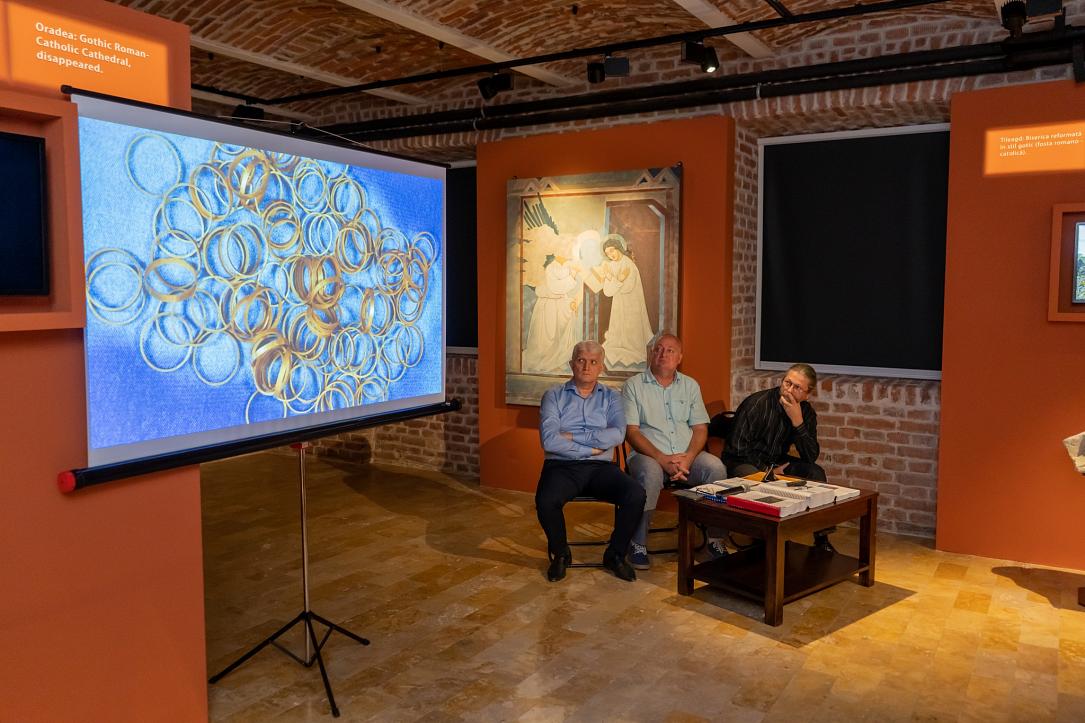Unique gold treasure discovered during archeological research near Oradea



An extraordinary discovery was made by the archaeologists of the Crişurilor Country Museum during the archaeological research carried out this year on the road connecting Oradea and the A3 motorway, as reported by Agerpres.
Upon opening up an ancient tomb, the team of archeologists found a treasure thought to date back to approximately 4500 B.C., which is unique throughout Europe.
Consisting of 169 gold rings, 800 mother-of-pearl beads, and a copper multi-spiral bracelet, the archeologists who made the discovery say that is a sensational find for the period, considering that all the gold pieces found in the Carpathian Basin until this discovery total around 150 pieces.
"It is a phenomenal discovery. Such a hoard of treasure does not exist in Central and Eastern Europe. It's very strange because gold had just been discovered in the Eneolithic," said the director of the Museum, historian Gabriel Moisa.
"Apparently, it was the tomb of an extremely rich woman. We don't know who she was here in Sîntandrei," (St. Andrew) "When the treasure is ready, we will follow up with another more detailed presentation,” he concluded.
While a portion of the gold rings and mother-of-pearl beads were shown at the press conference, the treasure will only be presented in its entirety after the necessary chronological determinations - using the C14 method and DNA analysis - and the anthropological research.
"The gold rings are currently in the process of being cleaned in the laboratory and weigh over 200 grams. It is alluvial gold, obtained from sand by washing because that is the process that was used in prehistoric times, not lode mining," said Dr. Călin Ghemiș, coordinator of the archeological sites.
According to Dr. Călin Ghemiș, the gold hoard is the most important discovery from an archaeological and heritage point of view, as the inventory of complex 22 at site VIII is "extremely rich for the Copper Age period".
The archaeological research was carried out by the Museum’s archaeologists in collaboration with other institutions, between March 29 and June 25, under the coordination of archaeologist Dr. Călin Ghemiș (Crișurilor Country Museum), in collaboration with Prof. Dr. hab. Molnar Kovacs Zsolt (Faculty of History and Philosophy, Babeș - Bolyai University of Cluj-Napoca), Dr. Adrian Ursuțiu (Archaeo Centre UBB - Institute of Archaeology and History of Art, Romanian Academy, Cluj-Napoca branch) and Prof. Florin Sfrengeu (University of Oradea).
Thus, writes Agerpres, several vestiges belonging to different cultural and chronological horizons were discovered (Neolithic, Bronze Age, La Tene Age, Sarmatian settlements, Roman Age, Medieval Age, 18th-century necropolis), the results obtained being of particular significance.
The inventory of these discoveries mainly consists of pottery, osteological material, and tools.
(Photo source: Crişurilor Country Museum's Facebook page)